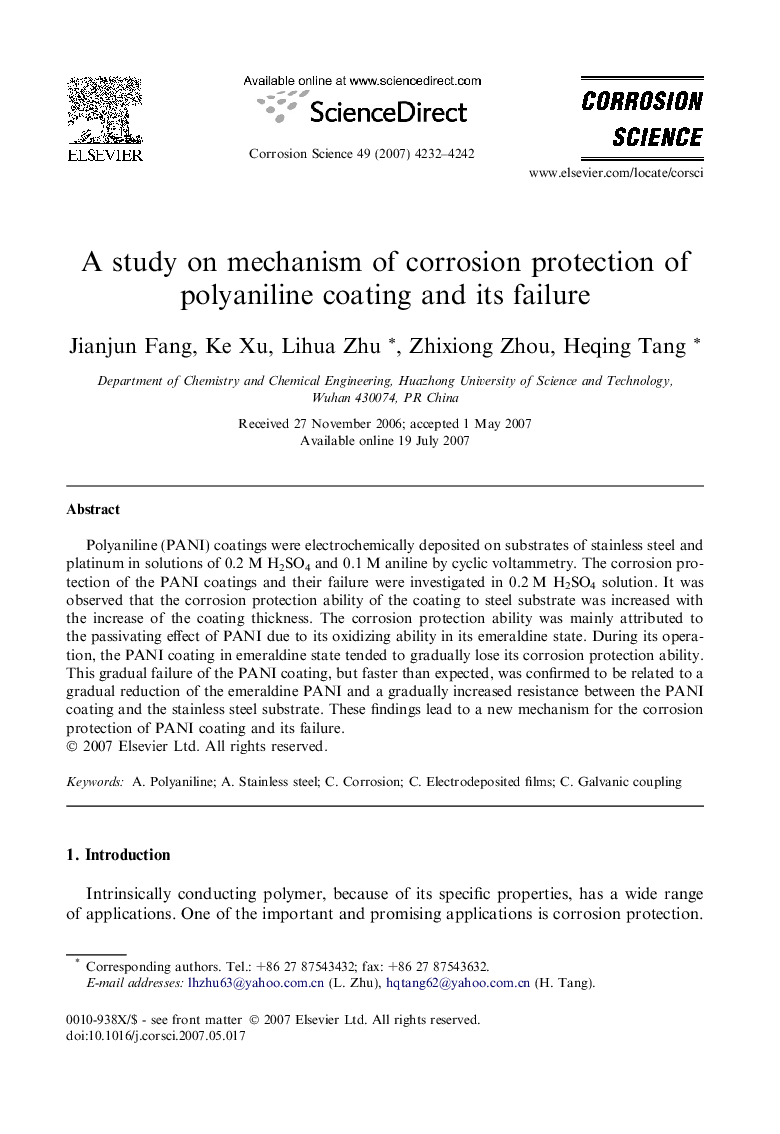| Article ID | Journal | Published Year | Pages | File Type |
|---|---|---|---|---|
| 1471745 | Corrosion Science | 2007 | 11 Pages |
Polyaniline (PANI) coatings were electrochemically deposited on substrates of stainless steel and platinum in solutions of 0.2 M H2SO4 and 0.1 M aniline by cyclic voltammetry. The corrosion protection of the PANI coatings and their failure were investigated in 0.2 M H2SO4 solution. It was observed that the corrosion protection ability of the coating to steel substrate was increased with the increase of the coating thickness. The corrosion protection ability was mainly attributed to the passivating effect of PANI due to its oxidizing ability in its emeraldine state. During its operation, the PANI coating in emeraldine state tended to gradually lose its corrosion protection ability. This gradual failure of the PANI coating, but faster than expected, was confirmed to be related to a gradual reduction of the emeraldine PANI and a gradually increased resistance between the PANI coating and the stainless steel substrate. These findings lead to a new mechanism for the corrosion protection of PANI coating and its failure.
